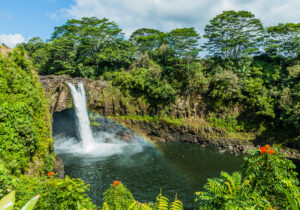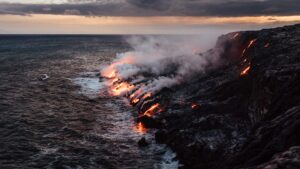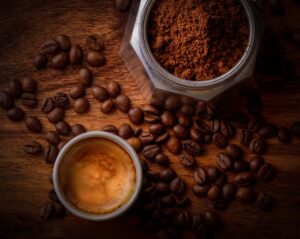Kailani Tours Hawaiʻi has many tours to really see the beauty of the Big Island. Here’s a good article on the many attractions that distinguish the Big Island by editors of Travel Muse.
From volcanoes to underwater wonders, coffee to ranches, beach resorts to hula dancing, Hawaiʻi has packed a whole lot into one island.
The island of Hawaiʻi has been known by various names over the years: the Volcano Island, the Orchid Island and the Island of Hawaiʻi. And yet, this largest of the Hawaiʻian Islands chain, is perhaps best known locally as the Big Island.
And big it is too. At 4,038 square miles in size, the Big Island is twice the size of all the other Hawaiʻian Islands combined. It’s still growing with the recent volcanic activity and lava flows of the last few years from Kilauea Volcano, which has added many new acres of raw rocky coastline to the island. Of the 50 United States, Hawaiʻi is the only one that actually grows in size.
The Big Island lays claim to a handful of “Bigs.” The island’s dominant features are the 13,796-foot dormant volcano, Mauna Kea, and the 13,677-foot active volcano, Mauna Loa. The Mauna Kea Observatory Complex, home to a dozen of the world’s leading astronomical observatories on the summit of Mauna Kea, has more light-gathering power than any other site in the world. (Read our Mauna Kea Observatories article.) Hawaiʻi Volcanoes National Park is the state’s biggest park at 229,177 acres and features stark raw volcanic and lava flow landscapes. The biggest and best preserved Hawaiʻian heiau (a temple where the islanders’ ancient religion was practiced) is in the North Kohala district. The port town of Hilo is home to the annual spring Merrie Monarch Festival, the recognized “Olympics” of hula dance competition with hundreds of dancers and groups taking part. The Kona district is home to the state’s famed Kona coffee industry. The Big Island has the state’s biggest cattle ranch (and one of the nation’s largest), the biggest tropical flower industry, the biggest macadamia nut orchards, the biggest papaya farms, etc. You get the drift. The Big Island is big in a big list of ways.
Hawaiʻi is also big on activities, scenic beauty, cultural diversity and friendliness. The small-town casual atmosphere of this rural island defines its residents who live an unhurried and unheralded lifestyle. Take a tour and see what the big deal is about the Big Island.
Kona and Kohala Coast
The Big Island’s main tourist centers are the Kona and Kohala Coasts on the island’s west side. The Kona Coast covers about 60 miles of rough, rugged coastline with the town of Kailua-Kona as the focal point and a bustling hub for all sorts of visitor activities. Your choices range from historic cultural tours to hiking, golf, tennis, plenty of water sports and more.
The Kona Coast consists of mostly dry rolling foothill country and the steep slopes of the volcanic peaks Mount Hualalai (8,271 feet) and Mauna Loa (13,679 feet). Numerous small coffee farms and mills are scattered across the upland slopes where the perfect blend of rainfall and warm climate creates the famous gourmet Kona coffee. You can sample a fresh cup of Kona’s finest at several of the local mills and coffee farms.
Glimpses of Kona’s ancient Hawaiʻian heritage are evident at such sites as Ahu`ena Heiau in Kailua-Kona and the Pu`uhonua o Honaunau National Historical Park at Honaunau. The heiau (temples) have been reconstructed with authentic wood frame and grass-thatched huts with fearsome looking carved tiki idols lending a serious look.
Water-bound youngsters will especially like activities such as the Atlantis Submarine tour off the Kailua-Kona pier or Captain Dan McSweeney’s Whale Watch Learning Adventures off the Kona coast. For children with a more skyward focus, the Astronaut Ellison Onizuka Space Center has interactive exhibits and is conveniently located at the Kona International Airport.
The Kohala Coast is the Big Island’s leading luxury resort destination. Several world-class resorts are spread along some 30 miles of desert lava coastline north of Kailua-Kona, interspersed with fine golden sand beaches. Here you’ll be pampered at such fabulous hotels as the Hilton Waikoloa Village and Waikoloa Beach Marriott Resort & Spa at the Waikoloa Beach Resort. The Mauna Lani area offers the plush Mauna Lani Bay Hotel and Bungalows and the Fairmont Orchid Hawaiʻi. Further north on the Kohala Coast is the first-class Hapuna Beach Prince Hotel. Families will also find a range of Kohala Coast resort condo rentals for every budget and need.
Waimea and North Kohala
Midway on the plateau between the east and west coasts of the Big Island’s north end, lies the quiet country town of Waimea. This is paniolo (cowboy) country and home to the famous Parker Ranch. The ranch runs some 30,000 head of Hereford, Angus, Brangus and Texas Longhorn cattle, and numerous horses, on approximately 175,000 acres of rolling grasslands. The crisp, cool climate of Waimea also supports a thriving fresh produce industry producing crops of lettuce, cabbage, carrots, beans, and even roses—a specialty floral product which grows well here.
You can enjoy a horseback trail ride across the windswept ranchlands or up into the Kohala Mountains, or opt for a horse-drawn carriage ride. Nearly 20 miles away, up and over the scenic Kohala Mountain Road from Waimea on the Kohala Peninsula, are the old plantation towns of Hawi and Kapa`au. Just past Hawi and near Upolu Point is the famed Mo`okini Luakini Heiau and the birth site of King Kamehameha the Great who united the islands under one kingdom. Look for a historic statue of King Kamehameha next to the old courthouse in Kapa`au.
Hilo and Hamakua Coast
The Big Island’s eastside Hamakua Coast stretches for some 50 miles from Hilo to Honoka’a and the magnificent Waipi’o Valley. Hilo is the commercial and government center of the Big Island. But bring your umbrella, because Hilo is also the rain capital of Hawaiʻi, with an annual rainfall of 126 inches (which explains the tropical green environment). The Hamakua Coast has a number of small sugar plantation-era towns and villages. The sugarcane fields now sprout forests of eucalyptus trees, orchards of macadamia nuts, and fresh produce farms. The scenic beauty of rugged coast, surging surf, black sand beaches, deep gulches and lush rain forest is the real Hawai`i many come to see.
You can discover bargains in fresh produce, exotic tropical fruits and local foods at the Hilo Farmers Market. You can take a nature walk through the lush rain forest environment of Akaka Falls State Park, or take in the panoramic view of Waipi’o Valley from the overlook. Youngsters may prefer visits to the Panaewa Rain Forest Zoo, the Pacific Tsunami Museum and the Mokupapapa Discovery Center.
Puna-Ka’u and Volcanoes National Park
Highway 11 runs south from Hilo, passing through the rural district of Puna, on the way to Hawaiʻi Volcanoes National Park. Puna is a large swath of rolling lava lands, former sugarcane fields, rugged coastline, upland rain forest slopes and old plantation towns. Numerous tropical fruit and flower farms provide evidence of the mild sunny climate and rainfall of the region.
The entrance to Hawaiʻi Volcanoes National Park is about 28 miles south of Hilo and some 100 miles southeast of Kailua-Kona. The big attraction here is the ongoing eruption of Kilauea Volcano. At times, the lava flows in underground lava tubes. But you can sometimes see surface lava flows run into the ocean, which is a colorful and spectacular sight. Visitors can witness the latest volcanic activity by following park rules and directions and checking with park rangers for the latest safety updates. Hikes of varying lengths may be required over rough and rocky terrain. The park also has many hiking trails, the volcano observatory, visitors’ center, and campgrounds. Lodging can be found inside the park at Volcano House, or at the nearby Kilauea Lodge, and other inns in the Volcano area.




